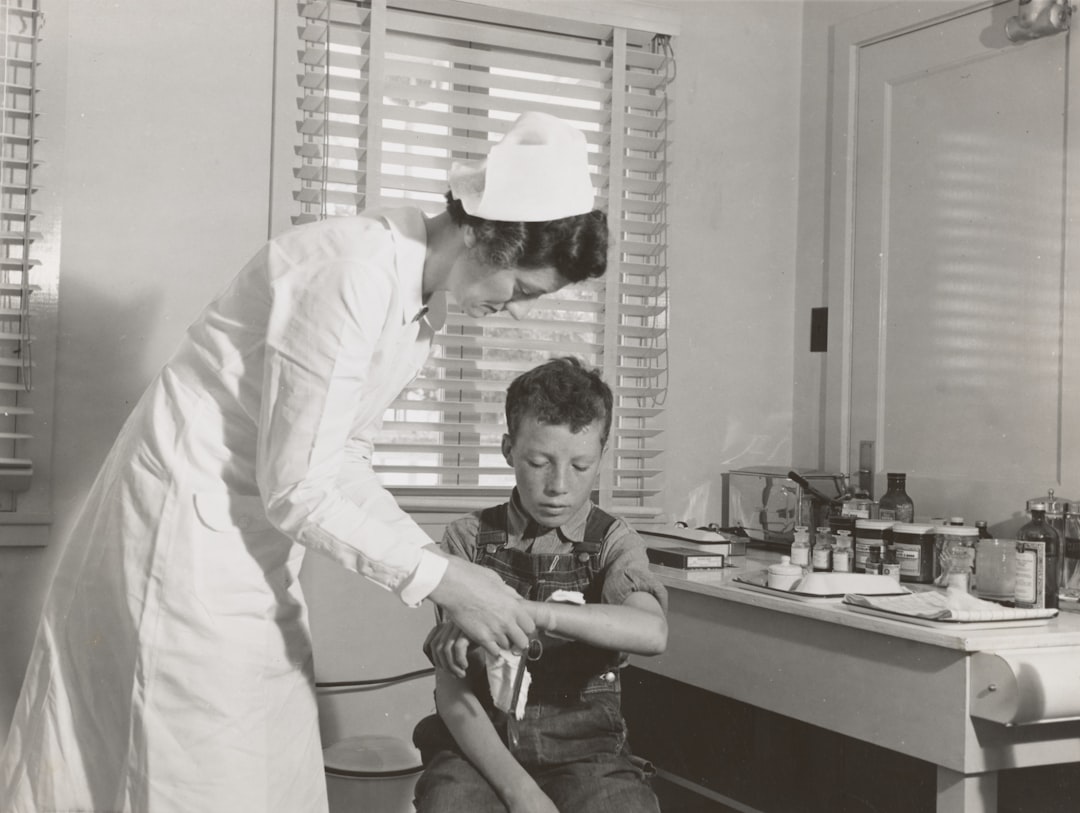

Engage prospects with a scan and streamline customer engagement with FREE QR code marketing tools by Sona – no strings attached!
Create a Free QR CodeFree consultation

No commitment

Engage prospects with a scan and streamline customer engagement with FREE QR code marketing tools by Sona – no strings attached!
Create a Free QR CodeFree consultation

No commitment
Health care providers are increasingly challenged by fragmented patient communications, inconsistent feedback channels, and inefficient manual workflows. Relying on paper-based surveys or legacy systems often means missing valuable input from high-value patients who never complete a feedback form, resulting in lost opportunities for service improvement and patient loyalty.
This problem grows when there is a lack of visibility into anonymous patient touchpoints. Providers might not realize which patients were unsatisfied or which interactions went unnoticed, quietly eroding trust. Modern solutions such as QR codes now allow health care organizations to unify and streamline feedback collection, as supported by this peer-reviewed research. By connecting any offline interaction to an immediate, app-free digital touchpoint, QR codes help convert anonymous or passive experiences into actionable, real-time data.
When deployed effectively, QR code initiatives bridge the gap between patient experience and operational insight. By embedding QR-enabled feedback opportunities within their care and marketing continuum, providers can identify silent churn risks, boost engagement at pivotal moments, and empower smarter, data-driven improvements in ways that align with the elevated expectations of today’s healthcare consumer.

Even in high-performing health systems, patient insights often go uncaptured because traditional touchpoints like paper surveys are cumbersome, easy to ignore, or poorly timed. Patients quickly moving through busy clinics may leave without being prompted for input, making it difficult to understand the full spectrum of satisfaction and pain points across each encounter. QR codes offer a streamlined way to replace analog processes with digital feedback loops that feel effortless for patients and staff alike.
By positioning QR codes where attention and intent naturally peak, you reduce friction and increase completion rates. Waiting rooms, checkout counters, and discharge paperwork are prime locations; so are appointment reminders, prescription bags, and follow-up care instructions. These placements meet patients in context, capture feedback while recall is fresh, and eliminate the need for app downloads or complex portals. Solutions like Sona QR make this shift approachable for teams by allowing central code management, dynamic destinations, and end-to-end analytics.
Some organizations are addressing visibility gaps with auto-routed, location-specific QR deployments. A health group might assign unique QR codes per clinic or service line so each response automatically reaches the relevant operational leader. This approach shortens the time to action, enables local service refinement, and builds a feedback culture that patients can feel on their next visit.

Health care organizations frequently miss critical signals when prospective or current patients do not submit forms or respond to calls. The result is invisible insights and delayed service improvement. QR codes help by creating seamless digital bridges at every stage of the journey. A single scan can open a privacy-safe survey, a post-visit knowledge base, a care management app, or a chat handoff for rapid resolution.
The power of QR codes comes from their speed, simplicity, and adaptability. They work without an app, can be printed anywhere, and can be updated dynamically as programs change. In a world where patient attention is scarce, reducing friction between intention and action is essential. With platforms like Sona QR for healthcare, teams can track scans in real time, understand which touchpoints perform best, and optimize content or placement without reprinting materials. This approach also mirrors the resurgence of QR usage in medical marketing.
For example, placing a QR code on discharge paperwork can recapture post-visit feedback that phone calls rarely obtain. Patients scan when it is convenient, complete a short form, and optionally request follow-up. Clinicians receive a prioritized alert for low ratings while operations review aggregate trends, accelerating both service recovery and program-level improvement.

Operational friction in feedback collection often stems from static, one-size-fits-all codes that cannot flex with evolving needs. Today’s platforms offer diverse formats so each scan does exactly what the patient intends: share feedback, contact a team member, join Wi-Fi, or download an app. Choosing the right format increases completion rates and reduces drop-off while streamlining patient documentation.
In health care environments, the most useful formats typically map to a handful of actions: collecting structured feedback, enabling secure communication, simplifying connectivity, and driving app adoption. Dynamic QR codes are especially valuable because destinations can be changed over time to adapt to new surveys, translate content, or support seasonal campaigns without reprinting.
Dynamic platforms like Sona QR solve manual tracking gaps with granular analytics and error-proof routing. Health systems can update code destinations after printing to roll out new surveys, enforce language preferences based on location, and automate response distribution for compliance and continuous improvement.
Growth opportunities often hide between offline materials and online systems. If feedback requests are not encountered at the right moment, or if follow-ups are disconnected from where patients actually engage, blind spots emerge and dissatisfaction grows. QR codes unlock these opportunities by making every physical asset an entry point into a digital workflow that is measurable and responsive.
Think in terms of patient journeys rather than channels. Map where attention is naturally highest, where questions surface, and where drop-off most often occurs. Then place QR codes that offer specific value at those points. With Sona QR, each placement becomes a data signal you can analyze by clinic, service line, and audience segment.
Organizations that assign unique, trackable QR codes across these assets gain demographic and behavioral insights. You will see which messages resonate, which locations lag in response, and where to deploy targeted improvements or follow-up campaigns.

Collecting feedback at pivotal moments can be tricky when you rely solely on calls or emails after the fact. Patients may forget, feel unsure about what to say, or worry about privacy. QR codes meet them in context, prompt concise input, and route it to the right team. When designed well, these journeys improve completion rates and data quality while respecting patient time.
Beyond surveys, QR codes can power a range of actions that support satisfaction and retention. They can connect printed instructions to dynamic, condition-specific materials, streamline contact with care teams, and reduce the friction that leads to silent churn. The result is a richer understanding of patient needs and a more responsive operational rhythm.
Providers report that a well-designed QR journey surfaces not just ratings but context: which topics patients explore, when they are most receptive to education or outreach, and how preferences differ by service line or location.
Each scan is a micro-signal that reveals intent, context, and timing. When you associate those signals with specific service lines, locations, and journey stages, you can build segments that power precise follow-up. In health care, this is particularly valuable because many interactions begin offline and involve multiple decision makers, such as caregivers and family members.
With Sona QR, every code can be tagged by clinic, campaign, and use case. You can capture anonymous engagement, enrich it through your CRM when consent is given, and then automate relevant outreach. This helps you re-engage high-fit patients who showed interest but did not complete a form or book an appointment. For execution tactics, see Sona’s Playbook.
By linking behavior to journey stage, you can tailor messages with precision. For example, someone who scanned a code on a sports medicine poster might receive an invitation to a prehab webinar, while a caregiver who scanned a pediatric discharge code might receive tips on medication adherence and a follow-up feedback prompt three days later.
Disconnected physical and digital campaigns create confusion and reduce trust. Patients see a flyer, brochure, or TV screen, but without an immediate action path, intent dissipates. QR codes connect channels so every touchpoint reinforces the journey and feeds measurable data back into your systems. This is already improving pharma communications.
To make the most of this, create a centralized code library and align each QR destination with a specific journey stage. Sona QR supports unified analytics across print, social, email, events, and in-clinic signage, so you can compare performance and optimize placements without guessing.
QR codes serve as the offline onramp to your digital engagement engine. With Sona QR, you can manage all codes in one place, monitor performance by channel and location, and sync scan activity with your CRM and ad platforms to keep the journey connected.
Moving from idea to execution is simple when you break the process into focused steps. The goal is to match each QR placement with a clear outcome, ensure the experience is trustworthy and easy, and measure performance so you can improve. The following checklist is designed for patient experience leaders, marketers, and operations teams working together to modernize feedback collection and engagement.
Sona QR supports every step with dynamic destinations, visual customization, and analytics that connect scans to outcomes. Start creating QR codes for free. Use this checklist to launch, then revisit quarterly to refine based on real-world data.
Start by choosing a single, measurable goal for your campaign. Common objectives include capturing hard-to-reach visit feedback, accelerating service recovery after a low rating, or driving adoption of patient education resources that reduce call volume. A tightly defined goal clarifies how you will design the landing page, what questions you will ask, and where you will place the code.
Translate the objective into a simple value proposition patients will understand in seconds. For example, “Scan to share your visit experience in 60 seconds” or “Scan for recovery tips and to request a callback.” Objectives should map to a business outcome, such as increasing survey completion by 30 percent or cutting repeat calls by 20 percent.
Select the code type that best fits your objective. For most feedback initiatives, dynamic web link codes are ideal because they allow for tracking and updates after printing. SMS or email action codes can be effective when the goal is to prompt a service recovery request or a billing support inquiry. vCards are useful when you want to save a staff contact for ongoing care coordination.
Dynamic codes are recommended for nearly all health care use cases because they provide flexibility and attribution. If you need a permanent link for a static, non-trackable resource, a static code can suffice, but you will lose insight and control. With Sona QR, you can generate any format and manage them centrally.
Design the QR code and the landing experience with clarity and trust in mind. Add your logo, a concise CTA, and a high-contrast frame so the code stands out. Place a plain-language privacy note near the code, such as “Your feedback is secure and used only to improve care.” Keep the survey short, mobile friendly, and accessible; avoid long free-text fields unless necessary.
Testing is critical. Scan from multiple distances, angles, and lighting conditions. Validate that the landing page loads quickly, the form fields are tap-friendly, and the experience works on both iOS and Android. Pilot in one clinic before scaling, and gather staff feedback on placement and patient reactions.
Roll out codes in locations where patients naturally pause and where the CTA makes sense. Waiting rooms, checkout counters, and discharge packets are usually high performing. Printed materials should place the code at eye level or within easy reach; digital signage should remain on screen for at least 10 seconds to allow plenty of scan time. Avoid placing codes where scanning would be awkward, such as near doors or tight hallways.
Pair the physical environment with a matching message. In a quiet exam room, emphasize privacy and the value of their feedback. At checkout, highlight that input improves scheduling and billing clarity. Coordinate with frontline staff so they can invite scanning and answer quick questions without slowing down operations.
Use analytics to understand not only how many people scanned, but which scans converted to completed feedback and which stalled. Segment results by clinic, department, time of day, and device type to discover patterns. A low scan rate might indicate poor visibility or unclear CTAs; a low completion rate might suggest a form that is too long or confusing.
Iterate in short cycles. Adjust CTAs, reposition signage, test different form lengths, or change the landing page order. With Sona QR, you can A/B test destinations, add UTM parameters for source attribution, and sync results to your CRM to trigger alerts when a response requires follow-up.
Feedback initiatives stumble when scan events are disconnected from operational value. Capturing a scan is not enough; you need to know whether it led to a completed survey, a resolved complaint, a reduced call volume, or a booked follow-up appointment. Advanced analytics create that linkage and help you invest where impact is highest.
Sona QR and Sona, an AI-powered marketing platform that turns first-party data into revenue through automated attribution and activation, provide an end-to-end view that connects offline scans to online actions and downstream outcomes. You can see which placements and messages drive engagement, which audiences respond, and how feedback correlates with retention, referral growth, or revenue.
By closing the loop between scans and outcomes, you elevate patient feedback from a compliance task to a performance driver. Teams can prioritize improvements that move the needle on satisfaction and loyalty, while leaders see clear ROI from their offline-to-online investment.
Expanding from a pilot to a systemwide program requires consistent practices that protect privacy, support staff, and keep data actionable. The most successful teams treat QR codes as part of a broader service improvement engine, not a one-off experiment. They standardize design patterns, establish governance for code creation, and review analytics in recurring huddles.
Focus on a small set of best practices that fit your environment and goals. Aim for predictable workflows that reduce burden on frontline teams and minimize risk. When combined with automation, these steps create a reliable, always-on feedback loop that scales without adding headcount.
For creative deployment, consider adding a QR code to magnet appointment reminders so families can update contact details or share feedback after a visit. Another option is placing a QR on billing statements that opens a short survey and offers a secure path to request a call from financial counseling, which often reduces frustration and repeat contacts.

Health systems of all sizes are using QR codes to transform passive moments into active feedback and education in healthcare settings. By replacing paper forms and phone tag with self-service digital experiences, teams capture more voices, intervene faster, and discover patterns that manual processes miss. Below are examples that illustrate the range of possibilities.
These examples are not only about higher survey numbers; they are about better outcomes per response. When providers route the right insight to the right team in near real time, they cut days off the service recovery timeline and generate improvements that patients notice on their next visit.
These creative deployments show how QR campaigns can recapture silent churn risks, track high-intent but unconverted patients, and sustain engagement well beyond the initial encounter.
Rolling out QR feedback at scale requires careful attention to security, compliance, and human factors. Patients need to know their data is safe, staff need to understand the purpose, and leaders need visibility into results. With these foundations in place, QR initiatives deliver sustained value rather than short-term novelty.
Avoid common missteps like placing codes in poor lighting or without a clear benefit statement. Put yourself in the patient’s shoes: can they easily scan, quickly understand what happens next, and feel confident their input will be used constructively? A few operational tweaks will drive strong adoption.
QR codes now enable health care providers to address persistent challenges such as lost patient insights and disconnected communications by turning every printed interaction into a feedback opportunity. With thoughtful deployment, you can track high-value but previously invisible audience segments, connect offline care to digital engagement, and unify patient data across traditionally siloed touchpoints.
By bridging patient experience gaps and surfacing actionable engagement signals in real time, health care teams foster trust, drive loyalty, and achieve operational improvements that reflect measurable patient and organizational impact. Start creating QR codes for free, then use Sona.com to attribute outcomes across the journey with offline attribution.
QR codes have revolutionized health care providers’ ability to gather patient feedback, transforming traditional surveys into seamless, real-time engagement tools. By simplifying the feedback process, QR codes enable providers to capture honest insights, improve patient experiences, and enhance care quality—all while reducing administrative burdens. Imagine instantly knowing which aspects of your service resonate most with patients and responding proactively to elevate satisfaction.
With Sona QR, you gain the power to create dynamic, trackable QR codes that can be updated instantly without reprinting, ensuring your feedback campaigns stay relevant and effective. Every scan connects directly to actionable data, empowering your team to make informed improvements that drive patient loyalty and better health outcomes. Start for free with Sona QR today and turn every patient interaction into a powerful opportunity for growth and excellence in care.
QR codes improve patient engagement by creating seamless, app-free digital touchpoints that capture real-time feedback and connect offline interactions with online resources, increasing completion rates and enabling smarter, data-driven improvements.
Using QR codes in medical marketing offers benefits such as dynamic content flexibility, cost efficiency at scale, measurable engagement by location and campaign, and the ability to connect offline materials to digital journeys that enhance patient interaction and follow-up.
QR codes enhance communication by enabling quick access to surveys, educational materials, direct contact options like vCards or SMS, and care management apps without downloads, facilitating immediate, secure, and context-relevant interactions.
Practical applications include collecting post-visit feedback via discharge paperwork, real-time pulse checks in waiting rooms, linking to treatment-specific education, enabling provider reviews, supporting telehealth follow-up, and providing Wi-Fi access in waiting areas.
Providers can leverage QR codes by strategically placing them at key patient touchpoints, using dynamic and trackable codes to gather actionable feedback, automate follow-up, segment audiences for targeted outreach, and integrate data with CRM systems to drive service recovery and program improvements.
Use Sona QR's trackable codes to improve customer acquisition and engagement today.
Create Your FREE Trackable QR Code in SecondsJoin results-focused teams combining Sona Platform automation with advanced Google Ads strategies to scale lead generation

Connect your existing CRM

Free Account Enrichment

No setup fees
No commitment required

Free consultation

Get a custom Google Ads roadmap for your business






Launch campaigns that generate qualified leads in 30 days or less.
